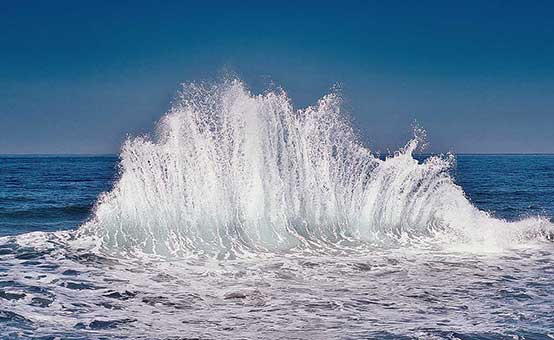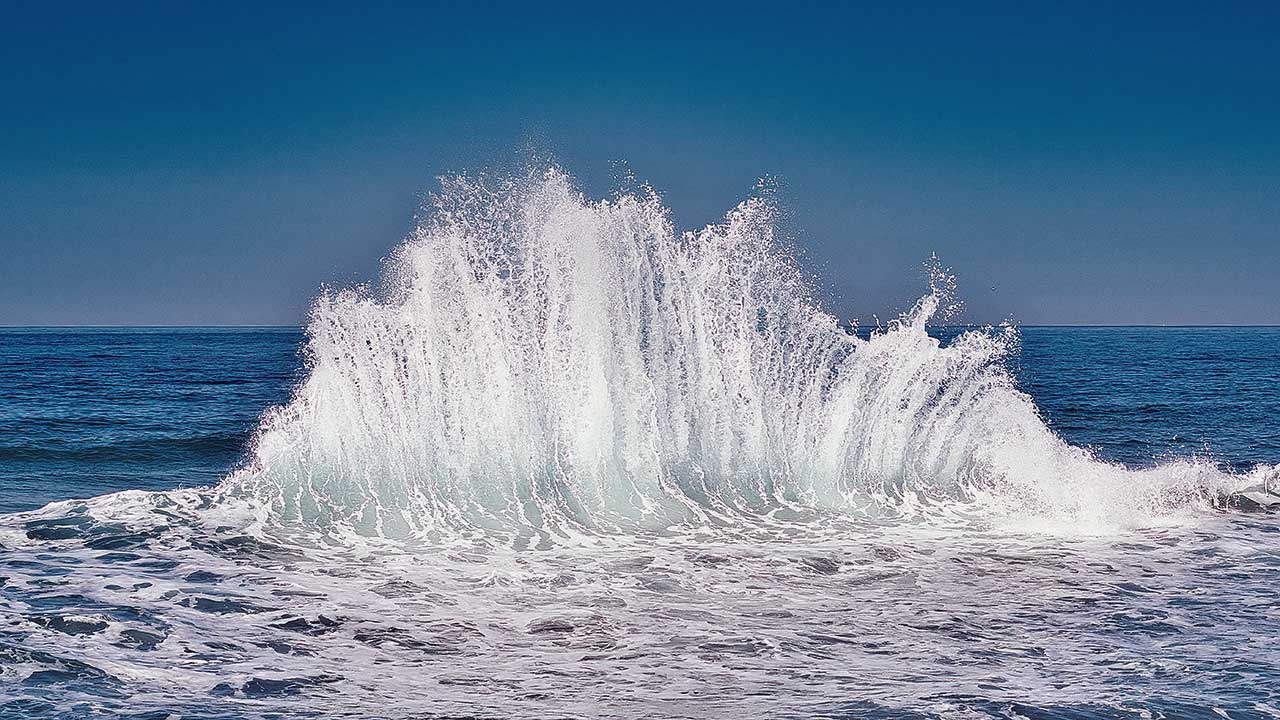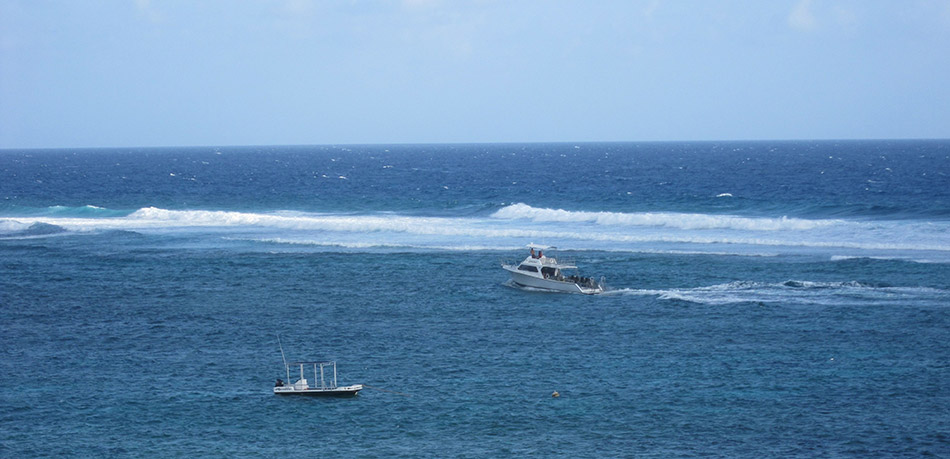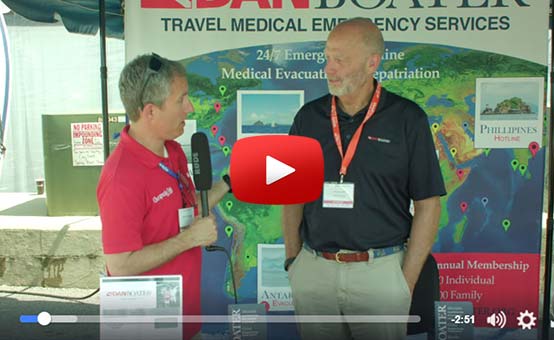

On March 11, 2017, I set out for the final dives of my week-long dive trip in Grand Cayman. Conditions had been unusually rough all week, so I was really excited to hear that the 30-knot winds had calmed down for our last day.
In this photo (below), taken by a man standing on the front porch of our dive resort, the ocean looks almost completely flat. If you look close enough, you can even see me standing near the middle of the lower deck holding onto the rail, enjoying the waves and the ocean breeze.

The vessel made a hard turn to pass through the break in the coral reef, just as we had done to get out to our dive sites all week, but this time we hit two small waves. When we hit those waves I instinctively turned to look through the boat’s front windows, and I saw a dark wall of blue-black water at least as high as the boat suddenly appear 10 feet off the bow. We were headed right into it, and all I had time to do was close my eyes and hold on for dear life. Sea conditions aren’t always what they seem.

The monster wave smashed right through the front windows of the boat with a force so great that it broke the lines securing the rinse bins and some other heavy equipment. I hit my head and arm as the wave threw me onto the port side rails and aft into the ladder. I was unable to grab hold of anything. I was at the mercy of the wave, which then pushed me over to the starboard side of the stern and nearly overboard.
As the wave washed completely over the deck it brought with it all of the dive equipment that was previously secured to the boat. Cylinders slammed into me on their way overboard. One smashed into my temple and tore my scalp, and I started bleeding profusely. All the blood caused a lot of commotion, but at the time I was more concerned about my arm and leg which I assumed to be broken since they were hurting even worse than my head did.
Although my divemasters were brand new, they responded immediately with their first aid training to control the bleeding and wrap my head as we headed back to the dock. It was clear they had a relevant emergency action plan in place, which was incredibly reassuring.
As the divemasters were working through their plan, I began shaking all over. I was shaking pretty badly, which seemed to worry them, but I assured them that it just seemed to be my body responding to all the stress. They stayed right by my side as we motored back to the dock.
Meanwhile, back on shore, my husband, Chip, overheard the captain radioing the base saying some equipment had been lost. Chip headed down to the dock to meet the boat, blissfully unaware that I was injured. As the crew was securing the vessel to the dock I heard Chip making small talk with the captain about his good docking, and I could just picture him smiling and looking around for me. I thought about how worried he’d be when he discovered me in a pool of blood on the deck with my head wrapped in bloody gauze.
Soon an ambulance arrived and took me to the hospital in Georgetown about 45 minutes away. Inside I was met by some excellent doctors who stitched up all my wounds (my head wound was stitched up so well that people have asked me if a plastic surgeon did it). Once I stopped bleeding, I got some X-rays and a CT scan. Amazingly, I had no broken bones, but I suffered five tears to my right rotator cuff, which likely resulted from my attempt to hold on. Although I had a concussion, my CT scan did not indicate a brain bleed so I was cleared to fly home the next day.
As of this writing, it’s been one month since the accident. My stitches have completely healed and my rotator cuff has been repaired, but I still have two big lumps on my shin and my ankles are still black and blue. Unfortunately, I have also experienced some post-concussion complications, and I continue to have "ghost vision" that even a neuro-ophthalmologist at Johns Hopkins has been unable to fix.
When I reflect on my accident, I am extremely thankful for the people who assisted and cared for me, and I am relieved that the outcome wasn’t worse. Although the event was pretty traumatic and left some lasting effects, I am alive, I can walk, and I’m still exploring this big blue world.
MORE FROM
SAFE PASSAGE

BOATING SAFETY | Aug 3, 2019
Boaters Have a New Option for Learning CPR and First Aid

BOATING SAFETY | Jan 23, 2019
Everything You Need To Know About DAN Boater Medical Evacuation Coverage